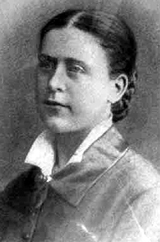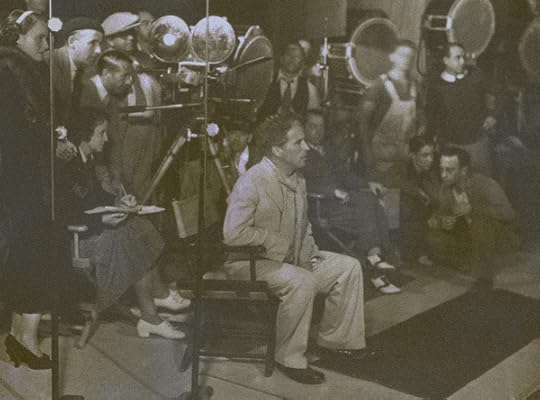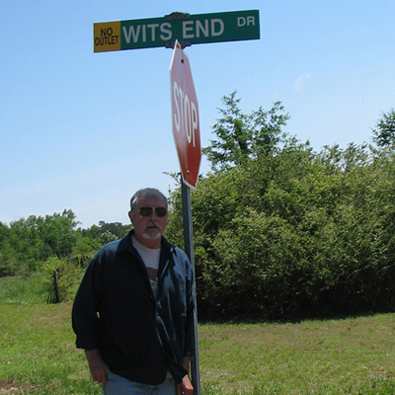Edward R. Hackemer's Blog, page 2
September 24, 2018
Dreams from an opium pipe ...
Leopold's nightmares were more than hallucinations; they were torture on the most vile level. He saw his tuberculosis-stricken father as a skeletal figure pushing a derelict rag-and-bone junk cart, gasping for breath, reaching and begging for pennies.
No-account Dillon Cafferty stood menacingly tossing lit matches onto his mother’s porch and laughing as if possessed by evil.
Leopold would see his beautiful wife Phryne as a painted whore in makeup so thick it hung like concrete wallpaper, wearing a mascara and lipstick stained camisole, enticing and calling to him from the doorway of Shea’s Hippodrome dance hall and motion picture house.
Eloisa was sitting on the curb outside her family’s home, destitute, disheveled, begging for money and drinking from a pocket flask, her clothing torn to shreds.
Leopold envisioned himself standing atop a grain silo and watching his brother Nicholas trapped inside a swirling whirlpool of wheat, helplessly struggling, and about to be ground into flour.
His mother Wilhelmina, and sisters Johanna, Ottilie and Hilde appeared as charred walking souls, drifting away with their backs turned, their scorched clothing falling from their burned, cadaverous bodies.

He would awake in a night terror, in a cold sweat, wallowing in his personal stench of sweat, tobacco, and the drug. His underclothes were glued to his wet, shivering body. The sweet aftertaste of the opium pipe triggered an involuntary reflex to retch and gag. His violent convulsions became part and parcel of each nightmare.
© 2014 Edward R. Hackemer
September 7, 2018
An Irish Odyssey
from "Fables Foibles & Follies"
I was born 10 April 1817, christened Aine and raised in County Wexford, on the east shore of Ireland, fully forty miles south of Dublin. My father, Liam was one of a dozen tenant farmers gnawing out a meager living on the one-hundred-acre Estate Gleann O’Carre. I never had the luck, invitation or opportunity to meet him, but the absentee English landlord and property owner was the Right Honorable Albert John Crosley, second Earl of Bartwicke, Lancashire. I do not know if he ever lived on or leastwise visited Gleann O’Carre. Now that I ponder upon it, I doubt anyone in my family ever met him. His social standing alone likely would have prevented me or any member of my family from meeting him. His name and title tell everything there is to know about him. He was far and away part of a higher social order than any soul in the family Faergahl.
 Seven days a week, each week of the year save for Christmas and Easter, my father and my older brothers Donagh, Braedan and Finbar worked the two rocky acres of brown earth on the north side of Ballyhale village that were allotted to my father. I remember our cottage as if I were there just yesterday. It was a one-room, thatched-roof timber and stone house built long before I came to the world. The floor was hand-hewn chestnut boards laid on top of the dirt beneath. My brother Finbar would sometimes jump up and down and make the dust fly up between the cracks. I think he did that just to hear my mother scold him.
Seven days a week, each week of the year save for Christmas and Easter, my father and my older brothers Donagh, Braedan and Finbar worked the two rocky acres of brown earth on the north side of Ballyhale village that were allotted to my father. I remember our cottage as if I were there just yesterday. It was a one-room, thatched-roof timber and stone house built long before I came to the world. The floor was hand-hewn chestnut boards laid on top of the dirt beneath. My brother Finbar would sometimes jump up and down and make the dust fly up between the cracks. I think he did that just to hear my mother scold him. We all slept together in a short, narrow loft on three mattresses. I remember I was the only family member who was able to stand up. At night, my three brothers were on one bed, my sister Caitlín and I occupied the smallest mattress and my father and mother Máire squeezed into the other. Daily, at first light my father and brothers worked the fields bordered by dry-stack stone fence and hedgerows, while mother kept house, prepared the family meals, carried water from and washed clothes a quarter-mile away in Balyrue Creek. Mother also milked the goats, tended to the Scots Grey chickens, and slopped the pig when we had one. I remember one little fellow we called Georgie, an autumn piglet my father named after King George IV of England. My mother was able to do all of these things and more while my sister Caitlín and I distracted her and ran underfoot or alongside pulling on her apron strings and getting in the way. I remember my mother as a loving angel with the patience of a saint.
© 2018 Edward R. Hackemer
Fables Foibles & Follies
August 10, 2018
A hole as big as New Jersey ...
High tide was to be at ten o’clock, and at quarter past, the SS Normandie would steam south out of the Hudson River, into the Atlantic Ocean on the way back to her home port in Le Havre, Normandy, France.
 The collection of travelers arriving and awaiting passage on the new ‘Liner of Legend’, the SS Normandie, was kissed by the fresh air of autumn. It was a clear, crisp, fifty-degree morning with a calm breeze from the southeast. The sun had risen an hour earlier, and was beginning to clear the New York skyline over Hell’s Kitchen and the Theater District. Moored motionless at Pier 88, the ‘Ship of Light’ was beaming brighter than the sun and looming larger than the morning.
The collection of travelers arriving and awaiting passage on the new ‘Liner of Legend’, the SS Normandie, was kissed by the fresh air of autumn. It was a clear, crisp, fifty-degree morning with a calm breeze from the southeast. The sun had risen an hour earlier, and was beginning to clear the New York skyline over Hell’s Kitchen and the Theater District. Moored motionless at Pier 88, the ‘Ship of Light’ was beaming brighter than the sun and looming larger than the morning. Notwithstanding the preeminence of the Empire State Building and New York’s other skyscrapers, the ‘Pride of the French Line’ presented a majestic, daunting and lasting impression with its nearly quarter-mile length and eighteen-story height. The ocean liner consumed the entire span of the pier; as long as the Chrysler Building stood tall.
A Yellow Cab had delivered Phryné and Hugo to the Première Classe (First Class) Embarkation building at Pier 88, New York Harbor at eight o’clock. The smaller, austere Second and Tourist Class boarding facilities were much further down the dock, seven-hundred feet away at the ocean liner’s stern, downwind and distanced from the more privileged passengers. The inanimate, grey steel hulk awaited and welcomed them all, either entitled, endowed, or of meager means. Whether they were warmed and adorned in sable, silk, cotton, fox or flax, the Normandie stood ready to swallow every paying passenger up and inside its welded, riveted and bolted hull. Baggage, pets, freight, foodstuffs, automobiles and bits of humanity’s upper crust were welcomed and given their specific place aboard.
At exactly ten o'clock, a steam-powered announcement split the air. The luxury liner gave empirical notice of her impending departure from the docks of New York.
Mounted on the Normandie’s forward funnel, behind the radio masts and the wheelhouse weather station, a gleaming set of three polished brass air horns (18, 24 and 36-inches high) released a massive cloud of white vapor and an explosion of sound that blew a hole as big as New Jersey into the sky above.
© 2018 Edward R. Hackemer
May 6, 2018
Dancing dangerously


Guilermo began to feel Phryné’s animated enthusiasm and brought a new-found zeal to the dance. They kept perfect cadence, performed parallel and cross walks, multiple pasadas, step-overs and suggestive leg hooks. The dance was theirs until the mishap.
He had sandwiched her left foot with his and pushed her into a deep, waist-high leg wrap. Her dress restricted her movement and forced her to stop in her tracks, break her partner’s embrace, stand on her right foot and quickly recover equilibrium without an embarrassing fall. In a split second, Phryné reached down to her hemline and tore the tightest, bottom semi-sheer tulle fabric upwards, halfway up her hip to the garter and stocking top.
It seemed choreographed. The finesse that followed seemed rehearsed. Despite exposing her garter, stocking and thigh during the rip, Phryné managed to maintain a modest decorum.
She spoke into his ear, “Lead me in a walk. There’s more.”
Guilermo stepped to the music and began to lead his partner with a short, four-step, defined salida .
Phryné repeated the performance of her impromptu, untried, dress-tearing tango step with a full turn and an overhead, high-handed flourish two more times; once for each additional layer of soft purple silk tulle. Biagi’s violin and Lamarque’s vocals paired perfectly with each tear of fabric. Biagi’s band ended Tango Negro with a strong set of bandoneón and concertina riffs, a rolling drum flourish and a vocalized grunt. Phryné and Guilermo had made an unforgettable impression on the sedate audience as well as the dancers on the floor. Her actions also garnered a boisterous fan base throughout the ballroom and there was applause, not overwhelming, but applause nonetheless, accompanied by a few isolated boorish whistles and cheers.
© 2018 Edward R. Hackemer

March 27, 2018
Quiet on the set ...
When the second cameraman snapped the last clapper board, it signaled that party time was imminent. The usually whisper-quiet set came to life with a steady hum. It was as if the crew breathed a sigh of relief in unison. Conversations started and the click of cigarette lighters and small talk bounced through the cavernous studio. The extras mulled around like lost puppies and the stand-ins scurried to see what titles were filming where the following day. Reels of cellulose safety film were stripped off the cameras, stowed in cases and either tied or strapped shut. Lights went out one by one, cluster by cluster, click after click and turned the yellowish, artificial, incandescent daylight into shadowy dusk.

December 11, 2017
Phryné

This spring: Phryné Isn't French
Within the pages of Phryné Isn't French, you will discover the story of a young woman, born August 16, 1905, in Buffalo, New York, and christened nine days later on Saturday, August 25th as Phryne Althea Truffaut. Her father, Bertram and mother Selene were French Huguenot emigrants. The early 20th Century saw the rapid burgeoning of the Women’s Suffrage Movement. At the behest of her maternal grandmother, Althea Archambault, the infant was named Phryne to honor a Classical Greek champion of woman’s rights.
Some of my readers may recognize Phryne from A Bridge To Cross and Dollar To Doughnut; books #3 and #4 in the Throckmorton Family Novels. In A Bridge To Cross, she was introduced as the love interest of Leopold Throckmorton only to fade away in Dollar To Doughnut.
After I finished writing Sangria Sunsets, I contacted Phryne and asked for an intimate, personal interview to be included with the last of the Throckmorton novels. Unfortunately, she was unable to submit any literary material due to an exclusive contract with a publishing house in Montreal, Quebec. She indicated further that she had an ongoing professional commitment to a Canadian film production team in Rouleau, Saskatchewan.
I will always remember Phryne. She remains close to the heart of many souls, mine included. Although Hugo affirmed that Phryné isn’t French, she has certainly earned her place on the wonderful revolving stage we collectively call Earth.
August 28, 2017
New locations and a new direction ...
“Phryné isn’t French. It’s Greek. She’s American.”
~ Hugo-Henri Grétillat, June 1940, Poissy, Île-de-France ~

© 2017 Edward R Hackemer
July 23, 2017
Writer's Bloc

Stopped at Wits End
... with no outlet ...
somewhere in North Georgia.
Where else would the Throckmorton Family's wordsmith be?
July 13, 2017
Not yet famous ...





